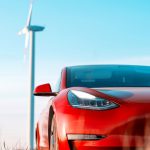Uber is actively pursuing a partnership with Tesla to incorporate Tesla’s upcoming robotaxis into its ride-sharing network. This strategic move aims to enhance Uber’s autonomous vehicle offerings by leveraging Tesla’s advanced technology. The collaboration seeks to combine Uber’s extensive driver base with Tesla’s self-driving capabilities, potentially transforming the urban transportation landscape.
While both companies have made significant strides individually, their combined efforts could accelerate the deployment of autonomous vehicles. Uber’s experience in ride-sharing and fleet management complements Tesla’s innovation in autonomous driving technology, potentially setting a new standard in the industry.
Why Collaborate with Tesla?
Uber CEO Dara Khosrowshahi expressed enthusiasm about partnering with Tesla, citing the company’s expertise in both hardware and software.
“No one wants to compete against Tesla or Elon, if you can help it,”
he stated, emphasizing the mutual benefits of such a collaboration. This partnership could leverage Tesla’s Full Self-Driving (FSD) technology, enhancing Uber’s service reliability and efficiency.
What Are Tesla’s Robotaxi Plans?
Tesla introduced its Cybercab service in October, aiming to launch an unsupervised driving service in Austin, Texas, this year. The company also plans to manufacture Cybercab vehicles without pedals and steering wheels by 2026. These advancements signify Tesla’s commitment to leading the autonomous vehicle market.
How Will This Partnership Impact the Market?
Integrating Tesla’s robotaxis into Uber’s fleet could significantly influence the autonomous vehicle industry.
“We think it’s an enormous, enormous long-term opportunity,”
Khosrowshahi remarked, highlighting the projected market value of over $1 trillion. This collaboration may set a precedent for future partnerships between tech and transportation giants.
Uber’s strategy extends beyond Tesla, as it also collaborates with other autonomous vehicle companies like Waymo and Wayve. These partnerships indicate Uber’s broader vision to dominate the autonomous ride-sharing market through diverse technological integrations.
Developing a sustainable autonomous vehicle business entails overcoming significant challenges, including regulatory approvals and ensuring vehicle safety standards. Uber is committed to addressing these hurdles to achieve widespread adoption of autonomous ride-sharing services.
The anticipated collaboration between Uber and Tesla not only aims to enhance ride-sharing services but also seeks to drive innovation and set new benchmarks in the autonomous vehicle sector. By combining their strengths, both companies are poised to influence the future of urban transportation.
- Uber aims to integrate Tesla’s robotaxis into its fleet.
- Tesla plans to launch unsupervised Cybercab services in Texas.
- Partnership seeks to capitalize on the growing autonomous vehicle market.










